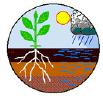|
Research Program
"My research seeks a better understanding of the underlying biology of drought stress response and better methods to screen breeding germplasm for improved responses to environmental stresses. In cassava and maize, we are comparing diverse lines for numerous traits related to stress response such as carbohydrate storage and remobilization, and accumulation of the stress hormone ABA. In maize, we focus on reproductive and kernel development and associated yield-determining processes. These studies seek to identify traits that could serve as targets for selection in breeding programs and QTL/marker assisted selection strategies. Our research has indicated that sink organ development during cell division and
primordial phases is especially responsive to environment, so we are determining the
mechanisms by which environmental stresses arrest sink-organ development (especially
reproductive organs: maize florets and kernels) alter phytohormone levels and modify the expression of
gene products involved in cell proliferation. All of our studies deal with plant responses to environmental conditions, especially water deficit, temperature, and elevated
atmospheric CO2. Studies on maize reproductive development concern
the influence of water deficit on abscisic acid and cytokinin levels, on sugar fluxes in
grain tissues, and regulatory proteins.We use transcript profiling to quantify gene expression, collaborate with quantitative geneticists and breeders on mapping genetic loci, and seek to ways to improve crop cultivars so farmers in drought-prone areas of the world can achieve food security."
Courses Taught
"I teach courses at the undergraduate and graduate level on crop science and crop physiology. Field Crop Systems (CSS 2110) is an introduction to the principles of field-crop production of food, feed, fiber and bioenergy, emphasizing the most important crop species and their morphological and growth characteristics essential to environmental adaptation and response to management. Physiology And Ecology Of Crop Yield (CSS 4130) examines the biological processes involved in the conversion of solar energy into harvested plant products and the environmental constraints on crop productivity. Acclimation responses and genetic adaptation are examined for key environmental factors. Students gain an understanding of the underlying basis of crop performance in diverse environments and identify processes which are in need of improvement through improved genetics and management. Water Status In Plants And Soils (CSS 6080) is a lecture/lab/discussion course that explores the techniques and underlying principles for field appraisal of the status of water and related functions in plants and soil, including methods used in physiological and phenotyping studies. Plant Responses to Environmental Stresses (CSS 6100), for which Dr. Vatamaniuk is the lead instructor, is a study of the responses of plants to environmental stresses, including drought, high temperature, salinity, chilling, freezing, flooding-hypoxia, and toxic elements. Students learn the physiological and biochemical basis of injury and plant resistance mechanisms at the whole-plant, cellular, and molecular levels." |
Selected Publications
others
Zhang, Xuehai; Warburton, Marilyn L.; Setter, Tim; Liu, Haijun; Xue, Yadong; Yang, Ning; Yan, Jianbing; Xiao, Yingjie (2016) Genome-wide association studies of drought-related metabolic changes in maize using an enlarged SNP panel. Theoretical and Applied Genetics web access: click here
Yu L-X, Setter TL (2016) Comparative transcriptomes between viviparous1 and wildtype maize developing endosperms in response to water deficit. Environmental and Experimental Botany 123: 116-124 web access: click here
Yu L-X, Shen X, Setter TL (2015) Molecular and functional characterization of two drought-induced zinc finger proteins, ZmZnF1 and ZmZnF2 from maize kernels. Environmental and Experimental Botany 111: 13-20 web access: click here
Duque LO, Setter TL (2013) Cassava response to water deficit in deep pots: root and shoot growth, ABA, and carbohydrate reserves in stems, leaves and storage roots. Tropical Plant Biology 6: 199-209 web access: click here
Boyer JS, Byrne P, Cassman KG, Cooper M, Delmer D, Greene T, Gruis F, Habben J, Hausmann N, Kenny N, Lafitte R, Paszkiewicz S, Porter D, Schlegel A, Schussler J, Setter T, Shanahan J, Sharp RE, Vyn TJ, Warner D, Gaffney J (2013) The U.S.drought of 2012 in perspective: A call to action. Global Food Security 2: 139-143 web access: click here
Okogbenin E, Setter TL, Ferguson M, Mutegi R, Ceballos H, Olasanmi B, Fregene M (2013) Phenotypic approaches to drought in cassava: Review. Frontiers in Physiology 4: 93. web access: click here
Setter TL (2012) Analysis of constituents for phenotyping drought tolerance in crop improvement. Frontiers in Physiology 3:180. web access: click here
Chen C-T, Setter TL (2012) Response of potato dry matter assimilation and partitioning to elevated CO2 at various stages of tuber initiation and growth. Environmental and Experimental Botany 80: 27-34. web access: click here
Setter TL, Yan J, Warburton M, Ribaut J-M, Xu Y, Sawkins M, Buckler ES, Zhang Z, Gore MA (2011) Genetic association mapping identifies single nucleotide polymorphisms in genes that affect abscisic acid levels in maize floral tissues during drought. Journal of Experimental Botany 62: 701-716. web access: click here
Setter TL, Parra R (2010) Relationship of carbohydrate and abscisic acid levels to kernel set in maize under postpollination water deficit. Crop Science 50: 980-988. web access: click here
Ribaut, J.-M., J. Betran, P. Monneveux and T. Setter (2009) Drought Tolerance in Maize. p. 311-344 In Handbook of Maize: Its Biology. Bennetzen, J. L. and Hake, S. C (ed.), Springer, New York. On-line access:
http://www.springerlink.com/content/978-0-387-79417-4/
Setter T.L., Fregene M.A. (2007) Recent advances in molecular breeding of cassava for improved drought stress tolerance. p. 701-711 In Advances in Molecular Breeding Towards Salinity and Drought Tolerance. M.A. Jenks, P.M. Hasegawa and S.M.Jain (ed.), Springer, New York. On-line access:
http://www.springerlink.com/content/v13h781mpqp2442t/
Setter T.L. (2006) The role of abscisic acid
under water-limited conditions. pp. 505-530 In Drought Adaptation in Cereals
, J.M. Ribaut(ed.), Food Products Press, New York. access:
http://www.taylorandfrancis.com/books/details/9781560222781/
Melkonian J., Yu L.-X., Setter T.L. (2004) Chilling responses of maize (Zea mays L.) seedlings: root hydraulic conductance, abscisic acid, and stomatal conductance. Journal of Experimental Botany 55: 1751-1760. web access:
http://jxb.oupjournals.org/cgi/content/abstract/55/403/1751
Alves A.A.C., Setter T.L. (2004) The Response of cassava leaf area expansion to water deficit. Cell proliferation, cell expansion, and delayed development. Annals of Botany 94:605-613. web access:
http://aob.oupjournals.org/cgi/content/abstract/94/4/605/
Alves A.A.C., Setter T.L. (2004) Abscisic acid accumulation and osmotic adjustment in cassava under water deficit. Environmental & Experimental Botany 51: 259-271. web access:
http://dx.doi.org/10.1016/j.envexpbot.2003.11.005
Yu L.X., Setter T.L. (2003) Comparative transcriptional profiling of placenta and endosperm in developing maize kernels in response to water deficit. Plant Physiology 131: 568-582 (note correction for Table I due to printer's error) web access to corrected copy: http://www.css.cornell.edu/faculty/tls1/pp.014365v1.pdf
Chen C.-T., Setter T.L. (2003) Response of potato tuber cell division and growth to shade and elevated CO2. Annals of Botany 91: 373-381 web access:
http://aob.oxfordjournals.org/content/91/3/373.abstract
Wang Z., Mambelli S., Setter T.L. (2002) Abscisic acid catabolism in maize kernels in response to water deficit at early endosperm development. Annals of Botany 90: 623-630. web access:
http://aob.oxfordjournals.org/content/90/5/623.abstract
Setter T.L., Flannigan B.A., Melkonian J. (2001) Loss of kernel set due to water deficit and shade in maize: Carbohydrate supplies, abscisic acid, and cytokinins. Crop Science 41: 1530-1540. web access: https://www.crops.org/publications/cs/abstracts/41/5/1530
Setter T.L., Flannigan B.A. (2001) Water deficit inhibits cell division and expression of transcripts involved in cell proliferation and endoreduplication in maize endosperm. Journal of Experimental Botany 52(360): 1401-1408 web access: http://jxb.oxfordjournals.org/content/52/360/1401.abstract
Jones R.J., Setter T.L. (2000) Hormonal regulation of early kernel development. pp. 25-42 In Physiology and Modeling Kernel Set in Maize, M.E. Westgate and K.J. Boote (eds.), Crop Science Society of America, Madison, WI
Alves A.A.C., Setter T.L. (2000) Response of cassava to water deficit: leaf area growth and abscisic acid. Crop Science 40:131-137 web access: https://www.crops.org/publications/cs/abstracts/40/1/131
Sun Y., Flannigan B.A., Setter T.L. (1999) Regulation of endoreduplication in maize (Zea mays, L.) endosperm. Isolation of a novel B1-type cyclin and its quantitative analysis. Plant Molec. Biol. 41: 245-258. web access: http://www.springerlink.com/content/u38144u0n6t34534/
Mugo SN, Smith ME, Banziger M, Setter TL, Edmeades GO, Elings A. (1998) Performance of early maturing Katumani and Kito maize composites under drought at the seedling and flowering stages. African Crop Sci J 6: 329-344
Mambelli S, Setter TL (1998) Inhibition of maize endosperm cell division and endoreduplication by exogenously applied abscisic acid. Physiol. Plant. 104: 266-272. web access: http://onlinelibrary.wiley.com/doi/10.1034/j.1399-3054.1998.1040215.x/abstract
Sun Y.J., Flannigan B.A.,Madison J.T., Setter T.L. (1997) Alternative splicing of cyclin transcripts in maize endosperm. Gene 195: 167-175
Artlip TS, Madison JT, Setter TL (1995) Water deficit in developing endosperm of maize: cell division and nuclear endoreduplication. Plant, Cell & Environment 18:1034-1040. web access: http://onlinelibrary.wiley.com/doi/10.1111/j.1365-3040.1995.tb00614.x/abstract
Setter TL (1993) Assimilate
allocation in response to water deficit stress. p. 733-739 In:
DR Buxton (ed) International Crop Science I, Chapter 97. Crop
Science Society of America, Madison Wisconsin
Lur, H. S., Setter, T. L. (1993) Role of auxin in maize endosperm development. Timing of nuclear DNA endoreduplication, zein expression, and cytokinin. Plant Physiology 103:273-280. web access: http://www.plantphysiol.org/cgi/content/abstract/103/1/273
Myers, P.N., Setter, T.L. Madison, J.T., Thompson, J.F. (1992) Endosperm cell division in maize kernels cultured at three levels of water potential. Plant Physiology 99:1051-1056. web access: http://www.plantphysiol.org/cgi/content/abstract/99/3/1051
Ober, E.S., Setter, T.L. (1992) Water deficit induces abscisic acid accumulation in endosperm of maize viviparous mutants. Plant Physiology 98:353-356. web access: http://www.plantphysiol.org/cgi/content/abstract/98/1/353
Ober, E.S., Setter, T.L., Madison, J.T., Thompson, J.F., Shapiro, P.S. (1991) Influence of water deficit on maize endosperm development. Enzyme activities and RNA transcripts of starch and zein synthesis, abscisic acid, and cell division. Plant Physiology 97:154-164. web access: http://www.plantphysiol.org/cgi/content/abstract/97/1/154
other publications
|

